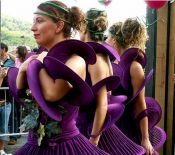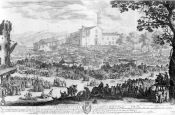Fairs, festivals and events in Impruneta

Festa dell'Uva (Grape Festival)
The Grape Festival, which started in 1926, and is probably the most popular annual event in Impruneta both for natives and tourists. Over the years it lost some of the original rural characteristics but its essential popular nature has remained intact. The most important part of the parade consists of allegorical carts built by the four districts of Impruneta: Fornaci, Pallò, Sant’Antonio and Sante Marie. During the day of the festival, popular dances, performances, tasting of agricultural products and shows of the local handicraft products are held. The "festa dell’uva" is held on last Sunday of September. The food stalls open at 11 am and the parade of floats starts at 3.30 pm. Tickets are required for the parade and may be obtained from Agenzia Impruneta in via Fabbiolle, 1 Tel: 055 2011704. Hours: Monday to Friday 9 am to 1 pm and 4 pm to 7 pm.)
La Fiera di San Luca (Fair of St. Luke)
This is one of the oldest surviving live stock fairs in Europe. It is held in the week in which the feast of St Luke occurs (18 October) The origins go back about thousand years to a time when the shepherds migrated from the Apennines to Maremma and stopped here to trade cattle. Other sources link this fair to the pilgrimage of Florentines to the Sanctuary of Santa Maria when it was necessary to provide food for the pilgrims. Of course, the fair has undergone some changes: the animals that used to work the fields have been replaced by tractors, but there is still a considerable demand for animals for meat and horses for riding. Horse trading in fact provides the principal authentic entertainment at the fair. The Fair at Impruneta by Jacques Callot
The Fair at Impruneta by Jacques CallotThe fair of Saint Luke is the subject of one of the most famous engravings by the French engraver Jacques Callot. This work, carried out in 1620, is one of the largest engravings (424X670 mm) made by Callot and is not only important by its spatial structure, the richness of its details, the abundance of characters (over 1100 figures) and scenes but also because it is a sociological testimony of Tuscany at that time. The church depicted is the what became a baroque structure that was destroyed by bombing during the war and replaced by a reconstruction of the pre-renaissance building. More about Jacques Callot.



